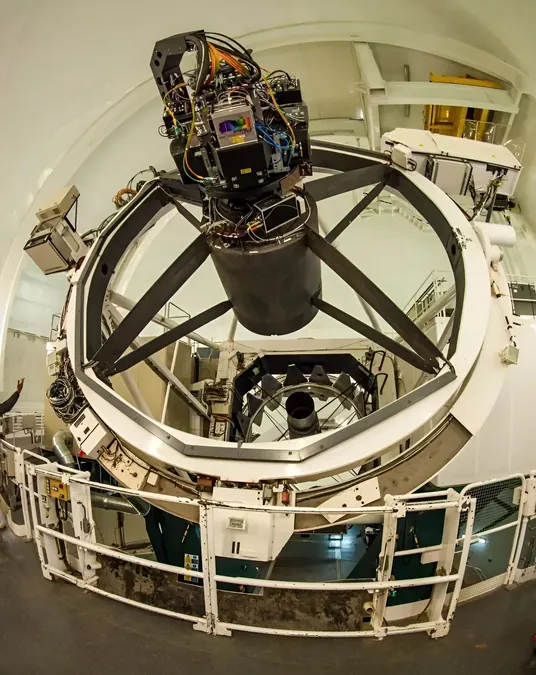
Groundbreaking New Catalog Unveils the Universe's Journey Through Time!
2024-09-23
Author: John Tan
Groundbreaking New Catalog Unveils the Universe's Journey Through Time!
In an age dominated by technology, we often underestimate the importance of maps. While physical road atlases may have faded into obscurity, the concept of a stellar atlas is gaining momentum in astrophysics. A new research initiative has forged ahead to create a comprehensive catalog of galaxies that not only measures distances but also delves deep into cosmic history, retracing events up to 10 billion years ago!
Imagine gazing at the Andromeda galaxy—its light takes a staggering 2.5 million years to reach Earth! Now, with a team of dedicated researchers spearheading the effort, scientists have compiled a stellar encyclopedia that encompasses millions of galaxies. This monumental project stems from the Physics of the Accelerating Universe Survey (PAUS) and is anchored by the Institute of Space Sciences and various collaborating organizations.
From 2015 to 2019, the teams spent over 200 nights conducting their survey using the PAUCAM—a powerful camera installed on the William Herschel Telescope (WHT) located in La Palma. With an impressive 1-degree field of view, this technology captured a vast array of celestial objects. The researchers employed 42 narrowband filters, ranging from 4400 to 8600 Angstroms, to systematically photograph the same celestial fields multiple times. By analyzing the redshift—the phenomenon where light from distant galaxies shifts towards the red wavelengths due to cosmic expansion—they could accurately determine distances to these remote galaxies.
The survey covers an astounding 50 square degrees of sky—equivalent to about 250 full moons! In analyzing the extensive array of images, the researchers compiled a catalog that now includes data on an astonishing 1.8 million celestial objects. This data will lay the groundwork for a deeper understanding of the intricate structure of our universe.
Gaining insights into the universe's anatomy is crucial for unraveling the mysteries of dark matter and dark energy. Enigmatic entities that comprise roughly 70% of the universe’s mass-energy content remain largely unexplained. While we observe dark energy's effects through the accelerated expansion of the universe, its exact nature stays veiled in mystery. The latest survey promises a treasure trove of information, providing researchers with extensive data that shines a spotlight on dark energy's elusive characteristics.
This groundbreaking research marks a significant advancement in our grasp of the cosmic distance scale, offering a rich collection of photometric redshift measurements that depict galaxies as they were billions of years ago. In the coming months, the team plans to delve into the dynamics of galaxy clustering and morphology, seeking further understanding into the evolution and shaping of our universe throughout its expansive timeline.
Stay tuned as we uncover the answers to some of the universe's greatest mysteries—this is just the beginning of an astronomical journey!





 Brasil (PT)
Brasil (PT)
 Canada (EN)
Canada (EN)
 Chile (ES)
Chile (ES)
 España (ES)
España (ES)
 France (FR)
France (FR)
 Hong Kong (EN)
Hong Kong (EN)
 Italia (IT)
Italia (IT)
 日本 (JA)
日本 (JA)
 Magyarország (HU)
Magyarország (HU)
 Norge (NO)
Norge (NO)
 Polska (PL)
Polska (PL)
 Schweiz (DE)
Schweiz (DE)
 Singapore (EN)
Singapore (EN)
 Sverige (SV)
Sverige (SV)
 Suomi (FI)
Suomi (FI)
 Türkiye (TR)
Türkiye (TR)